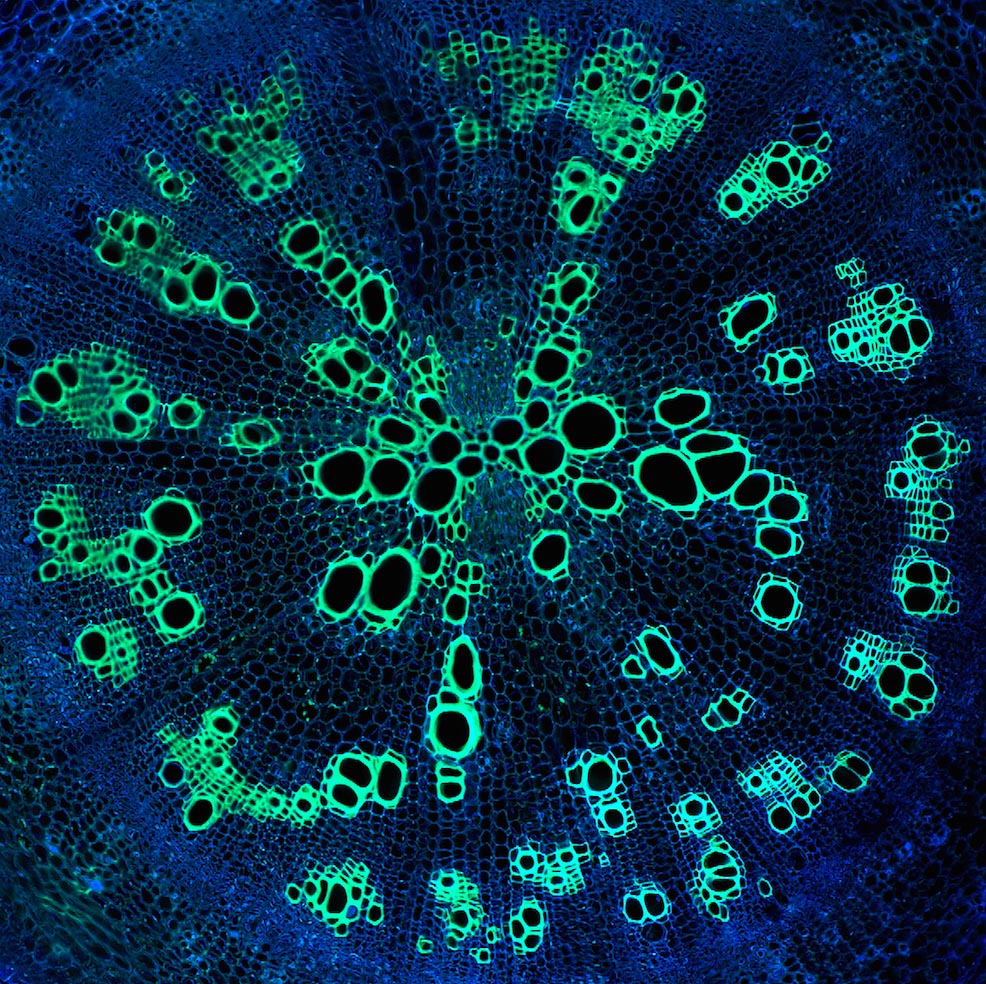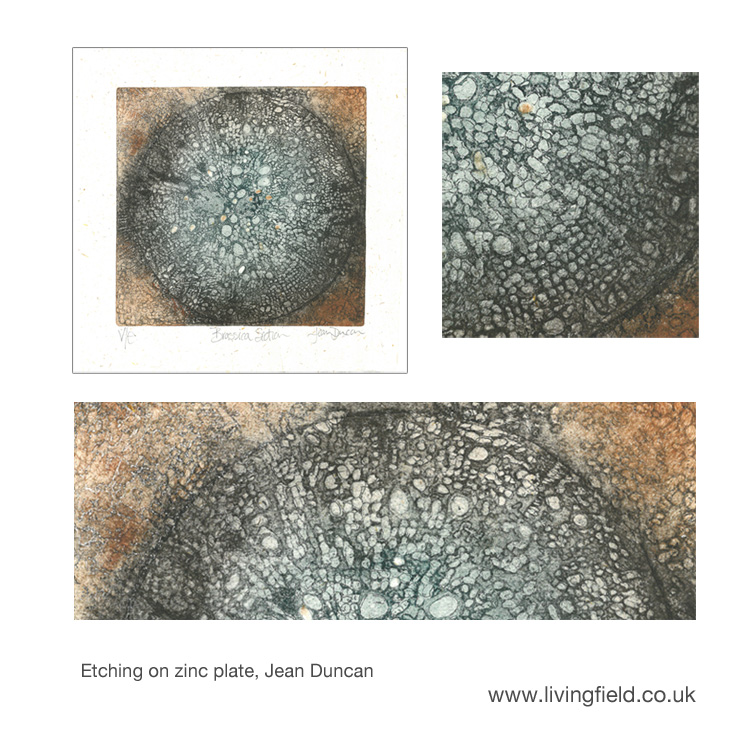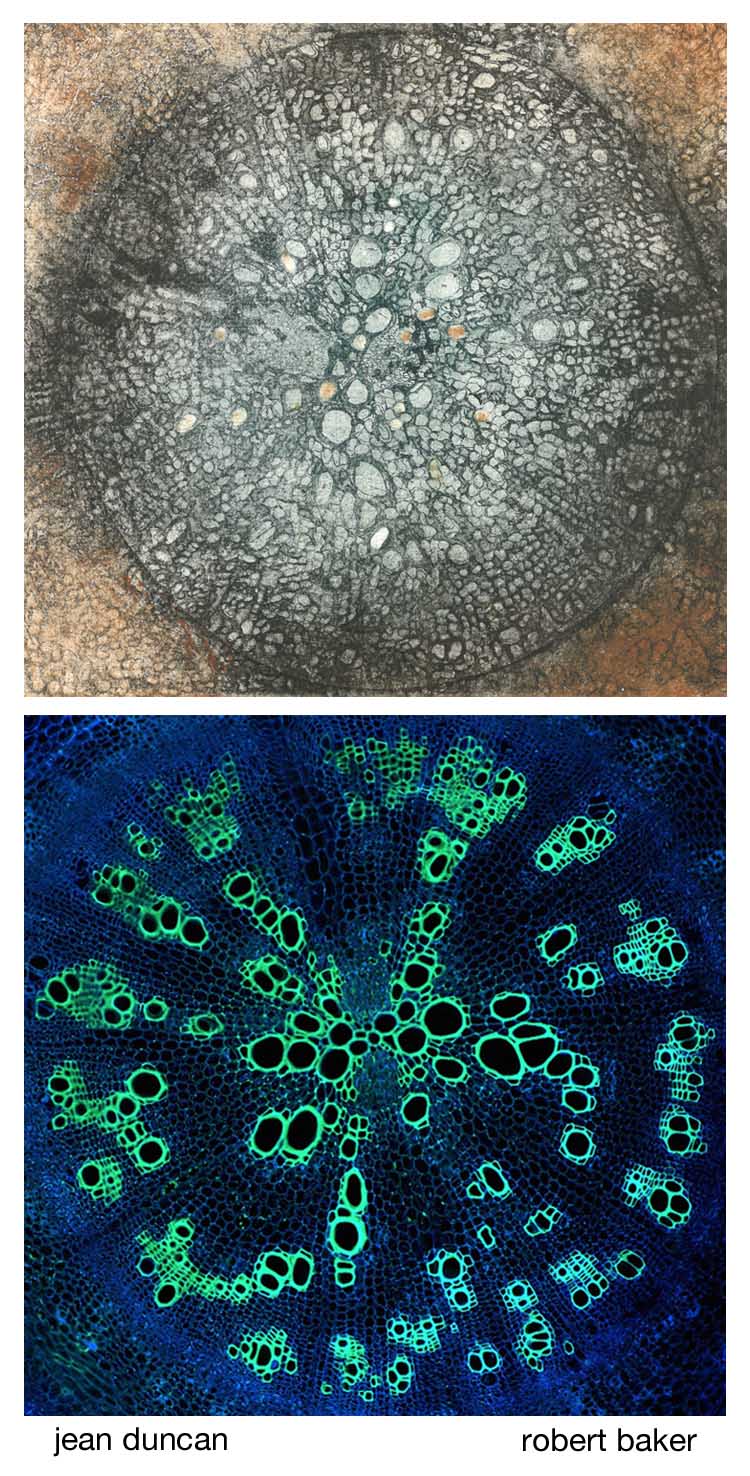Our artist friend, Jean Duncan has been trying out new techniques, getting inspiration and materials from the Living Field garden and from microscopic sections of roots. Jean writes about her depictions of brassica roots:
“The print is an etching made on a zinc plate by drawing with a needle into soft wax and then etching the lines in copper sulphate. Ink is rubbed in to the etched lines and then printed on wet paper.
“My idea is to print root sections and plant drawings on to plant papers. I want to combine ancient techniques of papermaking with the latest microscopic images in a way that will highlight the plant’s diversity and engage people in how plants can enrich soils as well as provide food.
“For papermaking, the most successful fibres so far have come from maize stalks from the Living Field garden. These are chopped and simmered for several hours in soda ash to break down the fibres. The long fibres are then bashed further in a Hollander beater like a large grinder. Sheets of paper are then formed on a mould and stacked for printing or casting. Wet paper sheets can be pushed into plaster moulds of the plants and roots and when they dry the plant is embossed into the paper.
“So it’s a long process but I am currently working on a latex cast of a plant root and it’s been successful so far. It may even be useful to scientists as a way of preserving the fragile roots in a way that means they can be handled without being damaged.
Sources/contacts
Jean Duncan on this web site (with links): art/jean-duncan
The original microscopic cross section of a root was provided by Robert Baker of the Department of Botany, University of Wyoming. [Ed: the original links given for this image are no longer active but are retained for reference – http://www.robertlbaker.org and http://www.macromicroscopic.com ]
Here it is.

And thank you for allowing us to use it on this site.
[More to follow from Jean’s experimenting ….]


